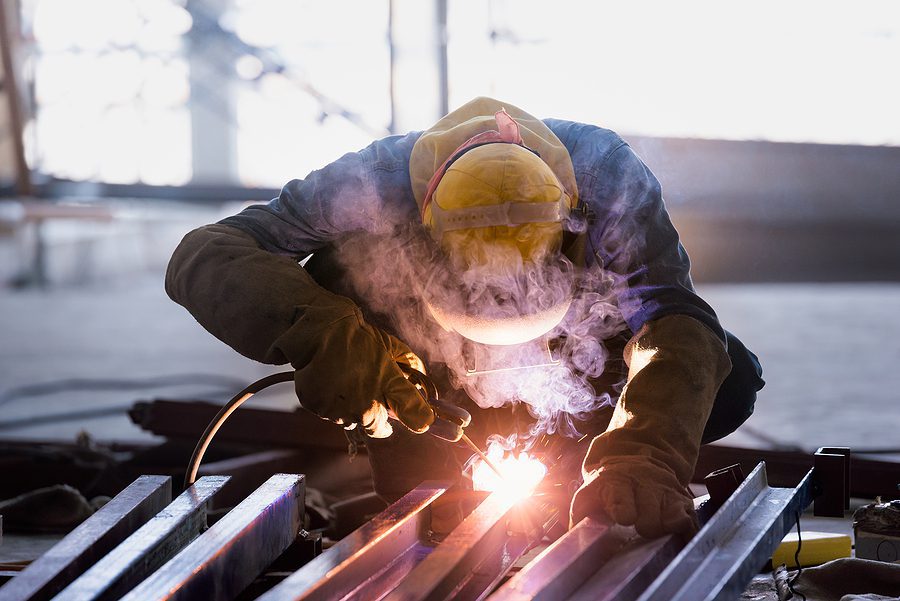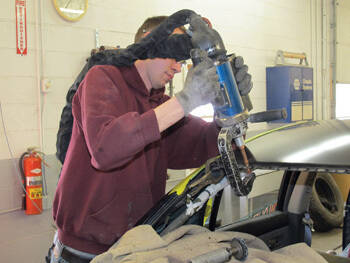Everything about Welding: Secret Insights Into Techniques and Best Practices for Success
Welding encompasses a selection of methods, each fit for particular products and applications. Understanding these approaches, such as GMAW, SMAW, and TIG, is essential for accomplishing ideal results. In addition, the right equipment and security techniques can not be ignored. As prep work and troubleshooting play crucial duties in the welding process, grasping these elements can significantly enhance the top quality of the final product. What are the essential variables that assure an effective weld?
Comprehending Different Welding Methods
Welding techniques incorporate a range of approaches, each matched to particular applications and materials. Among the most typical techniques are Gas Steel Arc Welding (GMAW), Shielded Steel Arc Welding (SMAW), and Tungsten Inert Gas Welding (TIG) GMAW, likewise recognized as MIG welding, is prominent for its speed and flexibility, making it optimal for thin materials. SMAW, or stick welding, is favored for its simpleness and efficiency in outdoor atmospheres, especially with thicker steels. TIG welding offers precision and control, making it appropriate for detailed job and non-ferrous steels (Belgrade). Each strategy has its special advantages and considerations, allowing welders to choose the finest technique based upon the project's needs, material kind, and desired outcomes. Comprehending these methods is necessary for effective welding
Crucial Welding Tools and Tools
While different welding methods need particular skills, the best tools and tools are equally vital for achieving quality results. Vital welding tools includes welding devices, which differ relying on the strategy-- such as MIG, TIG, or stick welding. Safety gear, consisting of handwear covers, helmets, and aprons, guarantees security and comfort during the process. Additionally, components and clamps assist protect materials in position, guaranteeing accuracy in welds. Consumables like welding rods, cord, and securing gas are additionally crucial components that affect the high quality of the weld. Moreover, tools such as cutters and mills help with surface area prep work and post-weld finishing, adding to an expert result. Spending in high-quality devices inevitably boosts the performance and performance of welding jobs.
Security Practices in Welding
Correct security techniques are important in the welding sector to shield workers from possible risks. Welders have to wear proper personal safety tools (PPE), including safety helmets with proper shading, handwear covers, and flame-resistant clothing. Ample air flow is important to reduce direct exposure to unsafe fumes and gases created during the welding procedure. In addition, employees need to be educated in the correct handling of welding equipment to avoid accidents. Fire precaution, such as maintaining combustible materials away from the welding location and having fire extinguishers conveniently offered, are needed. Normal evaluations of devices and offices can aid recognize potential hazards before they result in accidents. By adhering to these safety methods, welders can produce a more secure working setting and decrease dangers connected with their profession.
Readying Products for Welding
Preparing products for welding is a vital action that significantly influences the high quality and honesty of the last product (Montana Mobile Welding and Repair). Proper prep work involves cleansing the surfaces to remove pollutants such as oil, corrosion, and dirt, which can jeopardize the weld. Methods such as grinding, fining sand, or utilizing solvents are frequently used to accomplish a clean surface area. In addition, guaranteeing that the materials mesh well is essential; gaps can lead to weak welds. It's likewise crucial to think about the positioning and positioning of the elements, as this will certainly impact the convenience of welding and the last end result. Choosing the ideal filler material and making sure compatibility with the base steels is important for accomplishing solid, sturdy welds.
Tips for Getting High-Quality Welds
Achieving top quality welds calls for attention to information and adherence to ideal practices throughout the welding process. Proper joint preparation is necessary, making certain surface areas are tidy and totally free from impurities. Picking the proper filler material and welding strategy based upon the base metals is crucial for excellent bonding. Preserving constant traveling speed and angle while welding can avoid flaws and advertise harmony. Additionally, regulating warm input is necessary; too much warmth can result in warping and deteriorated joints. Regularly examining the welds during the process allows for immediate changes if essential. Utilizing ideal post-weld treatments, such as cleansing and anxiety alleviation, can improve the sturdiness and integrity of the weld, eventually ensuring an effective outcome.
Fixing Common Welding Issues
Welding typically presents challenges that can influence the high quality and integrity of the end product. Common problems such as porosity, inconsistent weld grains, and getting too hot can develop, each needing particular repairing techniques. Recognizing these issues is important for welders to improve their abilities and achieve suitable results.
Porosity Troubles Discussed
Although porosity can usually be forgotten, it continues to be a vital problem in welding that can jeopardize the honesty of a completed item. Porosity describes the presence of little gas pockets within the weld bead, which can deteriorate the joint and lead to premature failure. This trouble usually emerges from contaminants, moisture, or incorrect securing gas coverage during the welding process. To reduce porosity, welders need to validate that the base products are completely dry and tidy, make use of ideal securing gases, and keep constant article welding parameters. Regularly inspecting the devices and atmosphere can additionally assist recognize potential issues before they manifest in the weld. Addressing porosity efficiently is crucial for achieving strong, sturdy welds that fulfill top quality standards.

Irregular Weld Beads
Irregular weld beads can substantially affect the quality and toughness of a completed item. Numerous factors add to this issue, consisting of improper travel speed, incorrect amperage settings, and inconsistent electrode angles. When the welder moves also quickly, a grain might show up slim and lack penetration, while moving as well slowly can trigger extreme buildup. Additionally, using the wrong amperage can lead to either damaging or extreme spatter, both of which compromise weld integrity. The welder's method, such as irregular torch activity, can additionally bring about unequal bead more information appearance. To mitigate these troubles, welders must concentrate on preserving consistent, regulated movements and making certain appropriate equipment settings to accomplish harmony in their welds. Uniformity is key to accomplishing solid and trusted welds.
Overheating and Warping Issues
Extreme heat throughout the welding process can bring about significant overheating and warping issues, influencing the architectural stability of the workpiece. These troubles typically materialize as distortion, which can jeopardize alignment and fit-up, making more setting up challenging. Aspects adding to overheating consist of the selection of welding parameters, such as voltage and travel speed, as well as the kind of product being bonded. To minimize these problems, welders should maintain consistent traveling rate and ideal heat input while keeping track of the workpiece temperature. Additionally, preheating or post-weld warmth therapy can help reduce tensions triggered by fast air conditioning - Welding. Normal evaluation and adherence to finest practices are vital in protecting against overheating and making sure the long life and dependability of welded frameworks
Often Asked Inquiries
What Are the Occupation Opportunities in the Welding Sector?
The welding sector offers varied job possibilities, consisting of settings as welders, designers, educators, and inspectors. try this Specialists can work in production, building, aerospace, and automotive fields, gaining from solid demand and affordable salaries in various duties.
How Can I Improve My Welding Rate Without Giving Up Quality?
To enhance welding speed without compromising high quality, one need to practice efficient methods, keep tools, enhance setups, and improve hand-eye coordination. Routine training and looking for responses can also considerably add to attaining faster, top notch welds.
What Qualifications Are Readily Available for Welders?
Countless certifications exist for welders, consisting of those from the American Welding Culture (AWS), the National Facility for Building Education And Learning and Study (NCCER), and different industry-specific organizations. These credentials boost employability and demonstrate ability proficiency.
Just How Does Welding Impact the Properties of Metals?
Welding affects the buildings of steels by altering their microstructure, which can bring about adjustments in firmness, strength, and ductility. Warm input and cooling rates during the process greatly affect these product characteristics.
Can I Weld Dissimilar Metals With Each Other?
